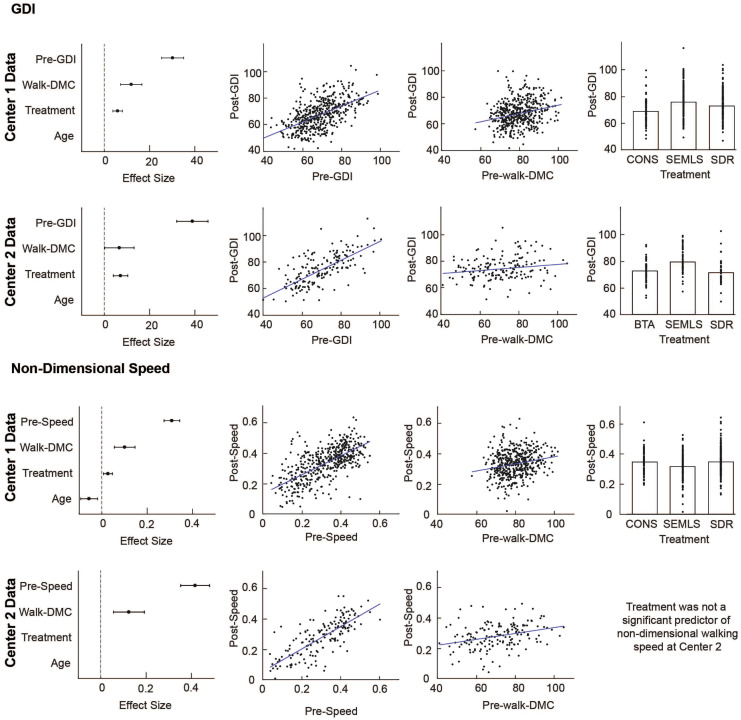Journal article in Archives of Physical Medicine and Rehabilitation:
In collaboration with Gillette Children’s Hospital and University Hospital Pellenberg we examined whether associations between treatment outcomes and muscles synergies are robust between clinical centers.
 Objective: To determine whether patient-specific differences in motor control quantified using muscle synergy analysis were associated with changes in gait after treatment of cerebral palsy (CP) across 2 clinical centers with different treatments and clinical protocols.
Objective: To determine whether patient-specific differences in motor control quantified using muscle synergy analysis were associated with changes in gait after treatment of cerebral palsy (CP) across 2 clinical centers with different treatments and clinical protocols.Design: Retrospective cohort study.
Setting: Clinical medical center.
Participants: Center 1: children with CP (n=473) and typically developing (TD) children (n=84). Center 2: children with CP (n=163) and TD children (n=12).
Interventions: Standard clinical care at each center.
Main outcome measures: The Dynamic Motor Control Index During Walking (walk-DMC) was computed from electromyographic data during gait using muscle synergy analysis. Regression analysis was used to evaluate whether pretreatment walking speed or kinematics, muscle synergies, treatment group, prior treatment, or age were associated with posttreatment changes in gait at both clinical centers.
Results: Walk-DMC was significantly associated with changes in speed and kinematics after treatment with similar regression models at both centers. Children with less impaired motor control were more likely to have improvements in walking speed and gait kinematics after treatment, independent of treatment group.
Conclusions: Dynamic motor control evaluated with synergy analysis was associated with changes in gait after treatment at both centers, despite differences in treatments and clinical protocols. This study further supports the finding that walk-DMC provides additional information, not captured in traditional gait analysis, that may be useful for treatment planning.
